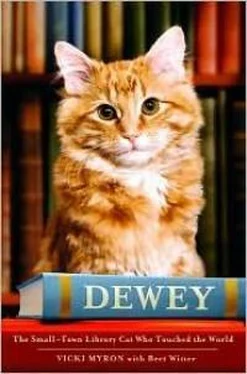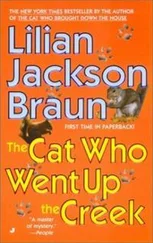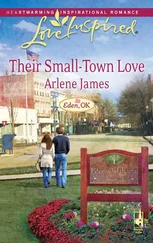And then came June 27, 1931.
The temperature was 103 degrees when, at 1:36 p.m., an eight-year-old boy lit a sparkler outside Otto Bjorn-stad’s drugstore at Main and West Fourth Street. Someone screamed, and the startled boy dropped the sparkler into a large display of fireworks. The display exploded and the fire, whipped by a hot wind, spread across the street. Within minutes the blaze was burning down both sides of Grand Avenue, completely beyond the control of Spencer’s small fire department. Fourteen surrounding towns sent equipment and men, but water pressure was so low river water had to be pumped into the mains. At the height of the blaze, the pavement on Grand Avenue caught fire. By the end of the day, thirty-six buildings housing seventy-two businesses, well more than half the businesses in town, were destroyed.
I can’t imagine what those people were thinking as they looked at the smoke floating out over the fields and the smoldering remains of their beloved town. That afternoon northwest Iowa must have felt like a lonely, isolated place. Out here, towns die. The businesses shutter; the people move on. Most of the families in Spencer had scratched out a living in the area for three generations. Now, on the cusp of the Great Depression—it had already started on the coasts but wouldn’t spread to inland areas like northwest Iowa until the mid-1930s—Spencer’s heart was in ashes. The cost, just over $2,000,000 in Depression-era dollars, makes it still the most expensive man-made disaster in the history of Iowa.
How do I know all this? Everyone in Spencer knows it. The fire is our legacy. It defines us. The only thing we don’t know is the name of the boy who started the fire. Somebody knows it, of course, but a decision was made to keep the identity secret. The message: we’re a town. We’re in this together. Let’s not point a finger. Let’s fix the problem. Around here, we call that progressive. If you ask anyone in Spencer about the town, they’ll tell you, “It’s progressive.” That’s our mantra. If you ask what progressive means, we’ll say, “We have parks. We volunteer. We always look to improve.” If you dig deeper, we’ll think for a minute and finally say, “Well, there was a fire. . . .”
It’s not the fire that defines us; it’s what the town did afterward. Two days after the fire, a commission was meeting to make the new downtown as modern and accident- proof as possible, even as stores reopened out of houses and outbuildings. Nobody quit. Nobody said, “Let’s just put it back the way it was.” Our community leaders had traveled to the large cities of the Midwest, like Chicago and Minneapolis. They had seen the cohesive planning and sleek style of places like Kansas City. Within a month, a master plan was created for a modern Art Deco downtown in the style of the most prosperous cities of the day. Each destroyed building was individually owned, but each was also part of a town. The owners bought into the plan. They understood that they lived, worked, and survived together.
If you visit downtown Spencer today, you might not think Art Deco. Most of the architects were from Des Moines and Sioux City, and they built in a style called Prairie Deco. The buildings are low to the ground. They are mostly brick. A few have Mission-style turrets, like the Alamo. Prairie Deco is a practical style. It’s quiet but elegant. It’s not flashy. It doesn’t show off. It suits us. We like to be modern in Spencer, but we don’t like to draw attention to ourselves.
When you come downtown, maybe for a pastry at Carroll’s Bakery or shopping at The Hen House, you probably won’t notice the low storefronts and long, clean lines. Instead, you’ll park along Grand Avenue, stroll under the large flat overhangs and in front of the glass windows. You’ll notice the metal streetlights and brick inlay on the sidewalks, the way the stores seem to flow one after the other, and you’ll think to yourself, “I like it here. This is a downtown that works.”
Our downtown is the legacy of the fire of 1931, but it is also the legacy of the farm crisis of the 1980s. When times are tough, you either pull together or fall apart. That’s true of families, towns, even people. In the late 1980s, Spencer once again pulled together. And once again, the transformation occurred from the inside out when the merchants on Grand Avenue, many in stores run by their grandparents in 1931, decided they could make the city better. They hired a business manager for the entire downtown retail corridor; they made infrastructure improvements; they spent heavily on advertising even when there seemed to be no money left in the community to spend.
Slowly the wheels of progress began to turn. A local couple bought and began to restore The Hotel, the largest and most historic building in town. The run-down building had been an eyesore, a drain on our collective energy and goodwill. Now it became a source of pride, a promise of better days to come. Along the commercial section of Grand Avenue, the shopkeepers paid for new windows, better sidewalks, and summer evening entertainment. They clearly believed the best days of Spencer were ahead, and when people came downtown, heard the music, and walked the new sidewalks, they believed it, too. And if that wasn’t enough, at the south end of downtown, just around the corner on Third Street, was a clean, welcoming, newly remodeled library.
At least, that was my plan. As soon as I was made director in 1987, I started pressing for money to remodel the library. There was no city manager, and even mayor was a part-time, largely ceremonial position. The city council made all the decisions. So that’s where I went, again and again and again.
The Spencer city council was a classic good ole boy network, an extension of the power brokers who met at Sister’s Café. Sister’s was only twenty feet from the library, but I don’t think a single member of that crowd had ever stepped foot in our building. Of course, I never frequented Sister’s Café, so the problem cut both ways.
“Money for the library? What’s that going to do? We need jobs, not books.”
“The library isn’t a warehouse,” I told the council. “It’s a vital community center. We have job placement resources, meeting rooms, computers.”
“Computers! How much are we spending on computers?”
That was always the danger. Start asking for money and sooner or later someone was going to say, “What does the library need money for, anyway? You’ve already got enough books.”
I told them, “Newly paved roads are nice, but they don’t lift our community’s spirits. Not like a warm, friendly, welcoming library. Wouldn’t it be great for morale to have a library we’re proud of?”
“I got to be honest. I don’t see how prettier books make a difference.”
After almost a year of being put on the shelf, I was frustrated, but certainly not defeated. Then a funny thing happened: Dewey started to make my argument for me. By the late summer of 1988, there was a noticeable change at the Spencer Public Library. Our visitor numbers were up. People were staying longer. They were leaving happy, and that happiness was being carried to their homes, their schools, and their places of employment. Even better, people were talking.
“I was down at the library,” someone would comment while window-shopping on the new, improved Grand Avenue.
“Was Dewey there?”
“Of course.”
“Did he sit in your lap? He always sits on my daughter’s lap.”
“Actually, I was reaching for a book on a high shelf, not really paying attention, and instead of a book I grabbed a handful of Dewey. I was so startled I dropped a book right on my toe.”
“What did Dewey do?”
“He laughed.”
“Really?”
“No, but I sure did.”
Читать дальше












